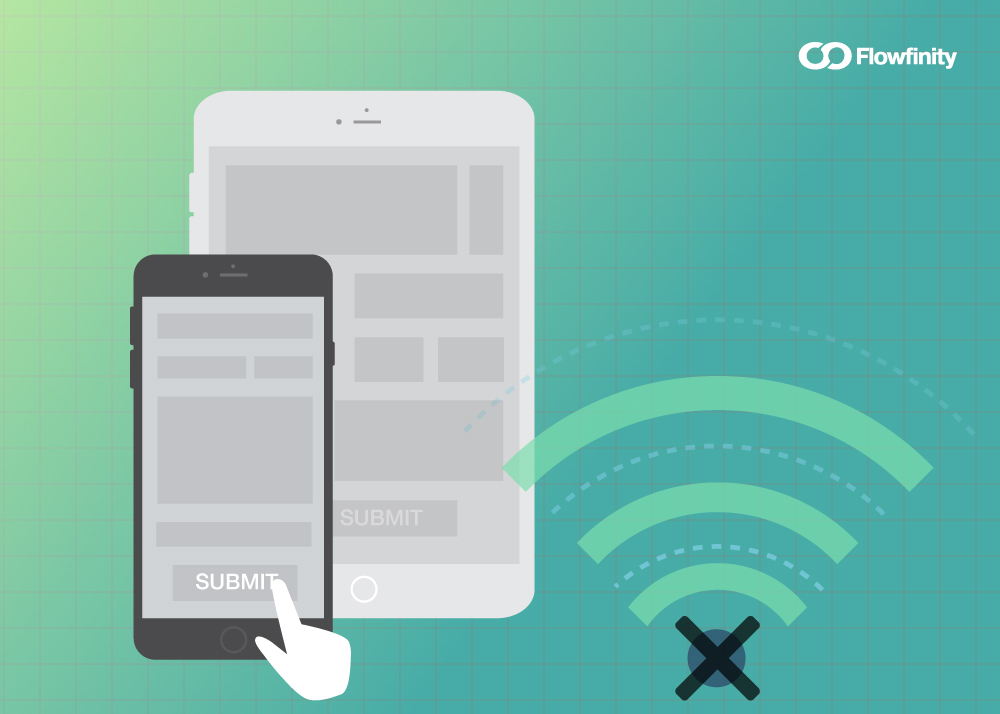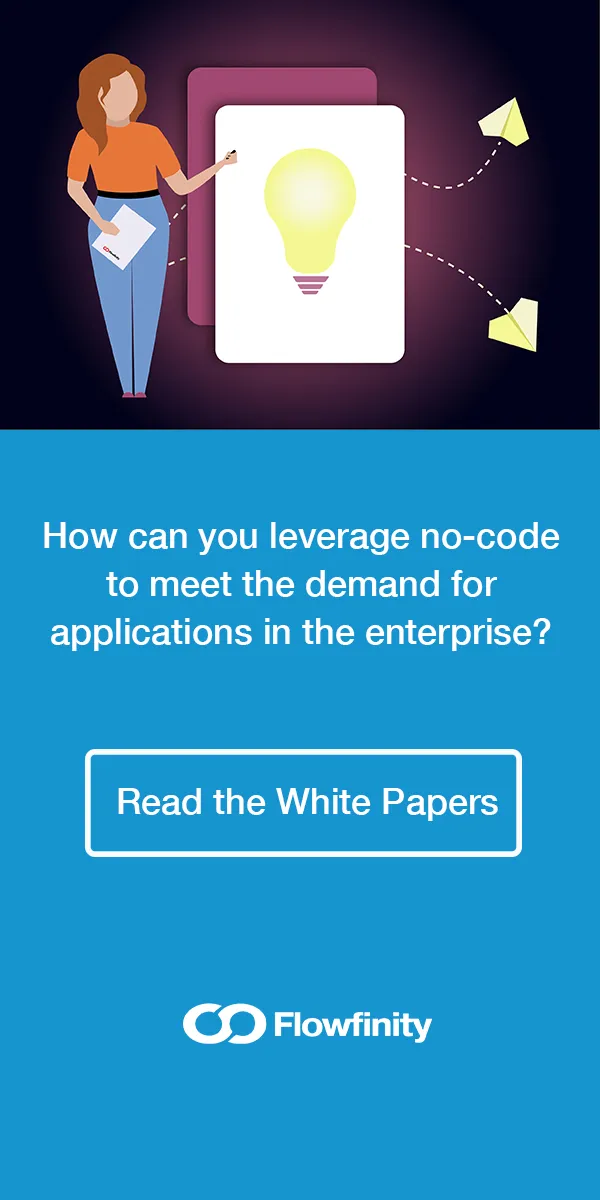Flowfinity 101: Easy-to-Build Mobile Apps That Work Offline
July 26, 2017
Working in the field has its challenges. Every dispersed team will face unpredictable network coverage, as well as communication hiccups sometimes. Users will get frustrated and find it difficult to remain productive with occasional network disconnects interrupting their daily work.
In Flowfinity, mobile applications have been designed to be fully prepared to lose network and server connectivity at any time, even if only briefly and intermittently. This offline mode enables field users to perform any single task in their workflow, without relying on continuous connectivity. As a result, Flowfinity applications can effectively bridge periods without server access, contributing to successful application adoption.
How offline mode works in Flowfinity:
There are two main functions that support the offline capability. Firstly, all data collection operations can be performed without server connectivity. Forms published to the devices are automatically stored in non-volatile memory of the device, and form submissions are always recorded into non-volatile memory first before being sent to the server. Secondly, submission delivery to the server is always performed asynchronously, relying on the copy stored in non-volatile memory. Submission delivery is reliable, as submission data is released from the device storage only after the server confirms successful receipt of the form submission.
Now, let's look at Flowfinity's key offline features for building apps that truly allow field users to remain productive:
1. Database access, lookups and reference data
To fully support user activities in the field, applications often require access to reference data as well as current work data. In Flowfinity, this can be facilitated with an automatic offline view capability. Views are record lists that are accessible to users, subject to their permissions and role membership. Simply switching a view into offline mode turns on a sophisticated synchronization mechanism that continuously maintains a copy of the specified data on the user devices based on user permissions. This enables both reference data records such as master lists, and current work items such as assigned job tickets to be accessible to the user, even if network connectivity is temporarily unavailable. For desktop users accessing the system using a web browser, all views operate the same when there is a persistent connection to the server.
2. View filtering and data personalization
These features allow proper management of the volume of data that's stored in device memory for offline usage. View filtering automatically pre-filters data prior to synchronizing it to devices. Personalization is based on use of either user or role lookup fields which help limit offline data sets to specific individuals or groups of users, such as departments or regional offices.
3. Nested fields
Many business processes and workflows involve complex data structures. Flowfinity provides the ability to model these structures through nested fields. Nested fields can have multiple levels and provide extensive flexibility for creating and working with data according to the business process. An important aspect of nested fields is that whole parent records are submitted as a single operation, and treated as a single transaction. This facilitates offline manipulation of complex data structures without the need to have server connectivity.

4. "Save as Draft" option
In Flowfinity, users can periodically save their work and store data into non-volatile memory, then switch to another task on the mobile device without losing any work. Later, users can return to the record draft and resume work right where they left off. This capability is designed to support extended offline periods, as well as to facilitate multi-tasking in the field.
5. Continuous log-in mode
This means access to the server isn't required to authenticate users while the device is offline. Instead, Flowfinity relies on the device's security perimeter, including device password protection, to protect any access to the application. User can save time when switching between field work and on-device work by not having to consistently provide login credentials.
Flowfinity's flexible software lets you build complete, truly offline-capable mobile business applications with point-and-click, not code. To learn how you can quickly automate your business processes, start a free trial today.
Transform your business with mobile apps.
« How to Create Business Workflow Applications Without Code
Ad Hoc Mobile Applications for Crisis Management: Cincinnati Responds to 100-Year Storm Disaster »

